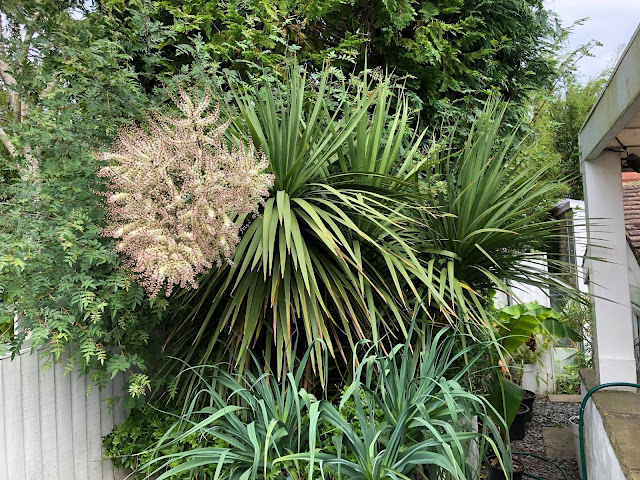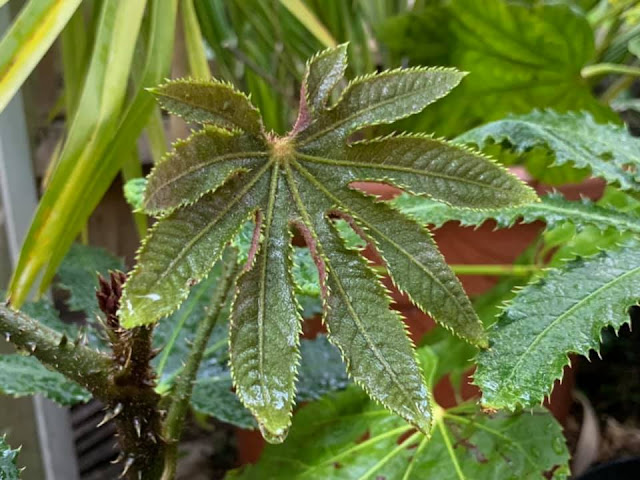At this time of the year one of the regular garden jobs is to hunt the wayward bamboo rhizomes, we grow a number of Phyllostachys species, and most have been seen to wander in our garden (ignore any nursery or garden centre that claims they clump - they dont!).
But by and large we are able to keep them where we want them, usually with a little gentle persuasion from a trusty pickaxe or in todays case a mattock.
In todays example a Phyllostachys aurea that was one of the early plantings in our garden needed a little attention. this is growing in a planting hole chipped out from crazy paving a former owner had long since buried under a layer of gravel that we see today. Fortunately this has helped contain this one. and when it does wander, the initial exploration is though a gravel layer - not that that deters the bamboo of course. But it does make it easier to get our once it starts to loosen.
How we went so long in our gardening life without a mattock is anyone's guess, but really it is an essential tool, easily chops through a matted mass of bamboo roots, and helps lift those wayward rhizomes for subsequent disposal.
All of which brings me on to Danger Gardens recent post about palms and bamboo, where Loree had been involved in a discussion where a participant commented about bamboo, "As a screening plant, it screams “I am entirely unable to think outside the box”.
Whilst I wouldn't agree with this exactly, perhaps I do have some sympathy for this view point, we have been removing bamboo over the last couple of years, funnily enough several Phyllostachys aurea have had the chop. When we started the garden, limited budgets and a desire for some instant height meant this was a regular repeated plant. It was readily available and relatively inexpensive, screening the neighbours or in the case of the plant above, hiding the shed.
Perhaps, one could argue we lacked some knowledge to think outside the box, but really it was that desire for a garden that wasn't all under 30cm tall that meant we headed in that direction.
We have never fallen out of love for bamboo, but we have limited space, and ejecting repeat bamboo gives us a little more space. They are of course quite messy plants at some times of the year, so a little less summer leaf litter isn't a bad thing either. From memory I think eight Phyllostachys aurea clumps have been removed over the last few years, with a further one on the radar for a new planting space later this year.
But as to the future for this particular plant, thats a little more safe for now, its location works, and I have no great desire to have to get rid of the crazy paving around it to stand any chance of removal. So for now its future is secure...
Gaz





















 This gardening blog follows our journey as we create our Tropical and Exotic themed garden. We hope you'll enjoy the journey as much as we do. We started our Exotic Garden in 2005 and this site will show its development, as well as our travels, both abroad and within the UK to gardens, nurseries and friends.
This gardening blog follows our journey as we create our Tropical and Exotic themed garden. We hope you'll enjoy the journey as much as we do. We started our Exotic Garden in 2005 and this site will show its development, as well as our travels, both abroad and within the UK to gardens, nurseries and friends.












